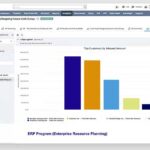The Best Fluffy Pancakes recipe you will fall in love with. Full of tips and tricks to help you make the best pancakes.
Table 1: Outline of the Article
| Heading | Subheading |
|---|---|
| 1 | Introduction |
| 2 | What is Business Intelligence? |
| 3 | Evolution of Business Intelligence |
| 4 | Understanding Trend Business Intelligence |
| 5 | Benefits of Trend Business Intelligence |
| 6 | Key Components of Trend Business Intelligence |
| 7 | Data Collection and Analysis |
| 8 | Predictive Analytics |
| 9 | Real-time Reporting |
| 10 | Data Visualization |
| 11 | Implementation Challenges |
| 12 | Best Practices for Implementing Trend Business Intelligence |
| 13 | Future of Trend Business Intelligence |
| 14 | Conclusion |
| 15 | FAQs |
Table 2: Article
Trend Business Intelligence: Unlocking Insights for Future Success
Introduction
In today’s fast-paced business landscape, staying ahead of the competition requires timely and accurate insights. That’s where business intelligence (BI) comes into play. Business intelligence involves leveraging data to make informed decisions. Over time, BI has evolved to incorporate various methodologies and technologies to provide deeper insights. One such evolution is the emergence of trend business intelligence. In this article, we’ll explore the concept of trend business intelligence, its benefits, key components, implementation challenges, and best practices for leveraging this approach.
What is Business Intelligence?
Before diving into trend business intelligence, let’s briefly touch upon the core concept of business intelligence. Business intelligence refers to the strategies, technologies, and tools used to collect, analyze, and present data in a meaningful way. It involves transforming raw data into actionable insights to drive informed decision-making and optimize business processes.
Evolution of Business Intelligence
Over the years, business intelligence has evolved from traditional reporting and data analysis to more advanced techniques. Initially, BI primarily focused on historical data analysis, providing retrospective insights. However, with technological advancements, BI now incorporates real-time data analysis, predictive analytics, and trend identification to enable proactive decision-making.
Understanding Trend Business Intelligence
Trend business intelligence takes BI a step further by focusing on identifying and leveraging trends in data. It involves analyzing historical and real-time data to uncover patterns, correlations, and predictive indicators. By recognizing trends, businesses can adapt their strategies, optimize operations, and gain a competitive advantage. Trend business intelligence offers valuable insights into consumer behavior, market trends, and emerging opportunities.
Benefits of Trend Business Intelligence
Implementing trend business intelligence can yield several benefits for organizations. Firstly, it enables proactive decision-making based on emerging trends and patterns, reducing reaction times and enhancing competitiveness. Secondly, it helps in identifying market opportunities, optimizing pricing strategies, and improving customer satisfaction. Thirdly, trend business intelligence empowers organizations to anticipate and mitigate risks, thereby enhancing risk management capabilities.
Key Components of Trend Business Intelligence
Trend business intelligence comprises various components that work together to provide meaningful insights. These components include:
1. Data Collection and Analysis: Effective data collection from diverse sources and thorough analysis are

crucial for trend identification. Businesses should invest in robust data collection processes and analytical tools to extract maximum value from their data.
2. Predictive Analytics: Predictive analytics leverages historical and real-time data to forecast future trends and outcomes. It utilizes statistical models and algorithms to identify patterns and make predictions, enabling proactive decision-making.
3. Real-time Reporting: Real-time reporting allows organizations to monitor trends as they unfold. With real-time dashboards and alerts, decision-makers can stay updated on the latest developments, enabling timely interventions and optimizations.
4. Data Visualization: Data visualization plays a vital role in trend business intelligence. It transforms complex data sets into intuitive visual representations, making it easier to identify and understand trends.
Implementation Challenges
Implementing trend business intelligence comes with its fair share of challenges. One of the key challenges is managing and integrating diverse data sources. Organizations need to ensure data consistency, quality, and security while dealing with data from various systems, platforms, and formats. Additionally, there may be a lack of skilled personnel who can effectively analyze and interpret the data.
Best Practices for Implementing Trend Business Intelligence
To overcome the challenges and maximize the benefits of trend business intelligence, organizations should follow these best practices:
- Define Clear Objectives: Clearly define the objectives and key performance indicators (KPIs) that align with your business goals. This ensures focused analysis and relevant insights.
- Invest in Robust Data Infrastructure: Establish a robust data infrastructure that enables seamless data collection, integration, storage, and analysis. Leverage modern technologies like cloud computing and big data solutions.
- Develop Data Governance Framework: Implement a data governance framework to ensure data quality, security, and compliance. Establish data governance policies, roles, and responsibilities across the organization.
- Foster a Data-Driven Culture: Promote a data-driven culture within the organization by educating and training employees on data analysis techniques. Encourage data-driven decision-making at all levels.
- Continuously Monitor and Evaluate: Regularly monitor and evaluate the performance of your trend business intelligence initiatives. Incorporate feedback and make necessary adjustments to optimize outcomes.
Future of Trend Business Intelligence
As technology continues to evolve, the future of trend business intelligence looks promising. Advancements in artificial intelligence, machine learning, and natural language processing will enhance trend identification capabilities. Real-time data streams from Internet of Things (IoT) devices will provide deeper insights, enabling organizations to respond swiftly to emerging trends.
Conclusion
Trend business intelligence has become a game-changer in today’s dynamic business landscape. By leveraging historical and real-time data to identify trends, organizations can make proactive decisions, optimize operations, and gain a competitive edge. Implementing trend business intelligence requires a robust data infrastructure, skilled personnel, and a data-driven culture. With careful planning, organizations can unlock valuable insights that drive future success.
FAQs
- Q: What is the difference between business intelligence and trend business intelligence?
A: Business intelligence focuses on data analysis and reporting, while trend business intelligence specifically identifies and leverages trends in data to drive proactive decision-making.
- Q: How can trend business intelligence benefit my organization?
A: Trend business intelligence enables proactive decision-making based on emerging trends, helps identify market opportunities, optimizes pricing strategies, and enhances risk management capabilities.
- Q: What are the key components of trend business intelligence?
A: The key components include data collection and analysis, predictive analytics, real-time reporting, and data visualization.
- Q: What challenges can organizations face when implementing trend business intelligence?
A: Challenges include managing diverse data sources, ensuring data quality and security, and a lack of skilled personnel for data analysis.
- Q: What does the future hold for trend business intelligence?
A: Advancements in technology, such as AI and IoT, will enhance trend identification capabilities, providing deeper insights for organizations.



